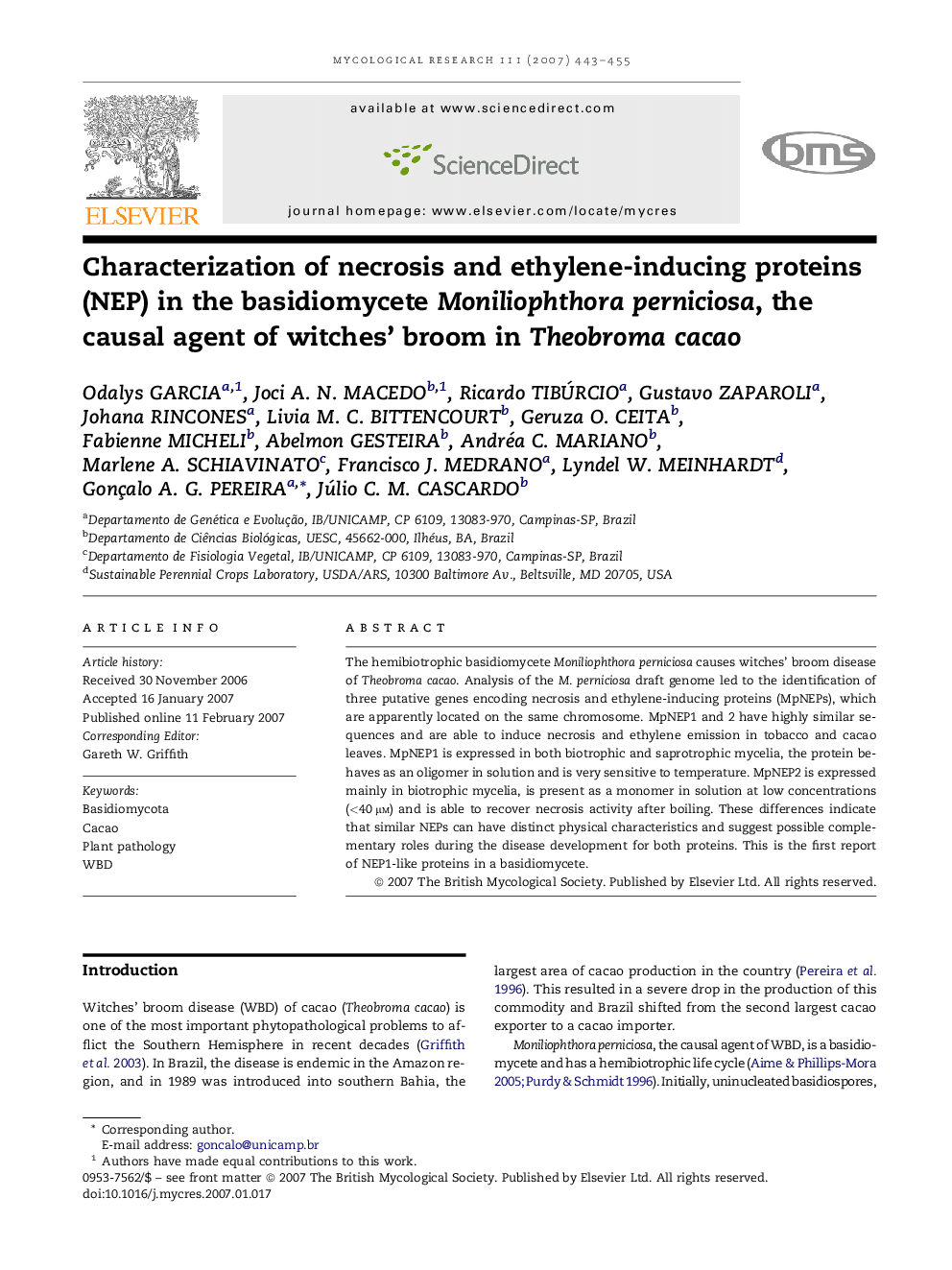| Article ID | Journal | Published Year | Pages | File Type |
|---|---|---|---|---|
| 4357944 | Mycological Research | 2007 | 13 Pages |
The hemibiotrophic basidiomycete Moniliophthora perniciosa causes witches' broom disease of Theobroma cacao. Analysis of the M. perniciosa draft genome led to the identification of three putative genes encoding necrosis and ethylene-inducing proteins (MpNEPs), which are apparently located on the same chromosome. MpNEP1 and 2 have highly similar sequences and are able to induce necrosis and ethylene emission in tobacco and cacao leaves. MpNEP1 is expressed in both biotrophic and saprotrophic mycelia, the protein behaves as an oligomer in solution and is very sensitive to temperature. MpNEP2 is expressed mainly in biotrophic mycelia, is present as a monomer in solution at low concentrations (<40 μm) and is able to recover necrosis activity after boiling. These differences indicate that similar NEPs can have distinct physical characteristics and suggest possible complementary roles during the disease development for both proteins. This is the first report of NEP1-like proteins in a basidiomycete.
